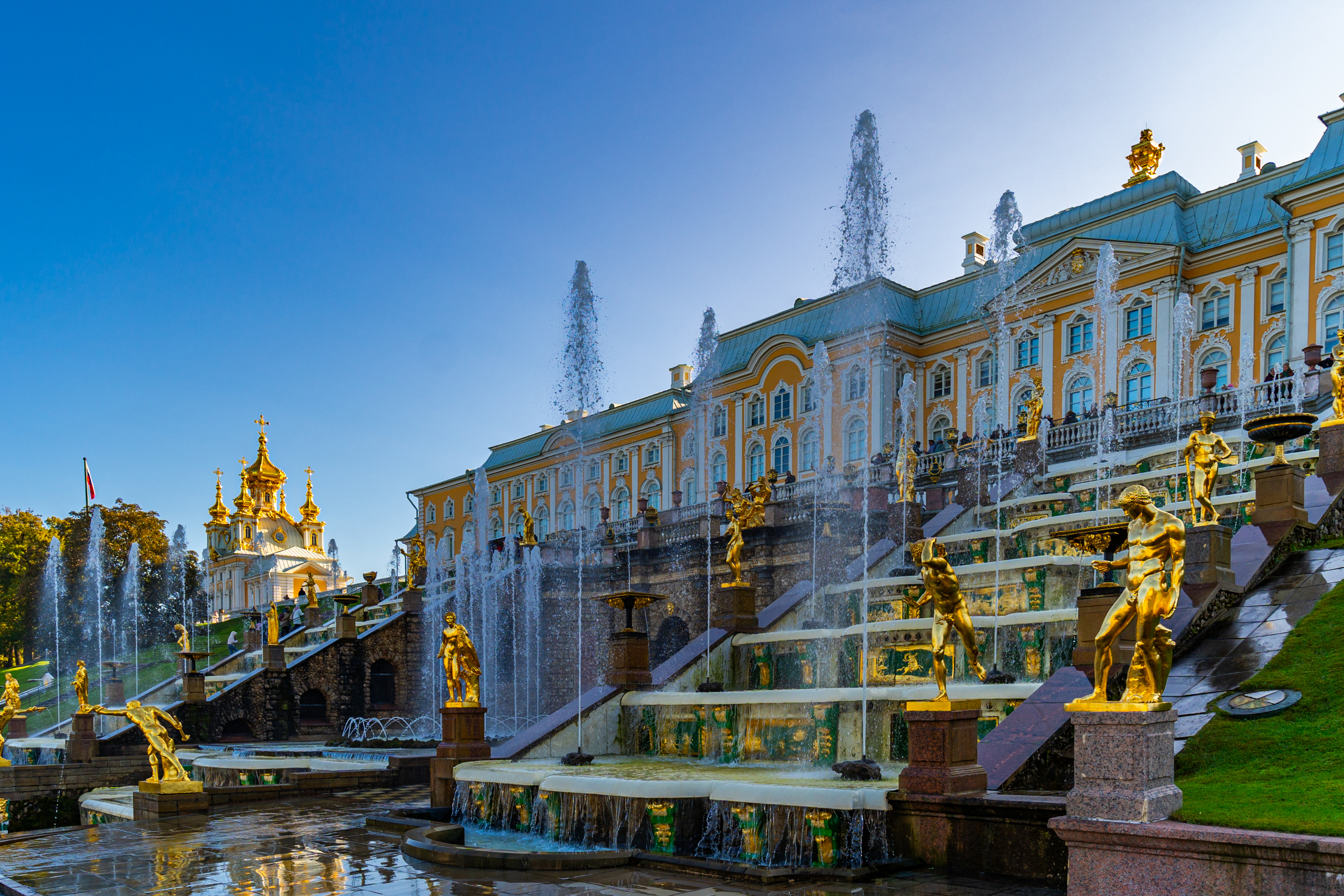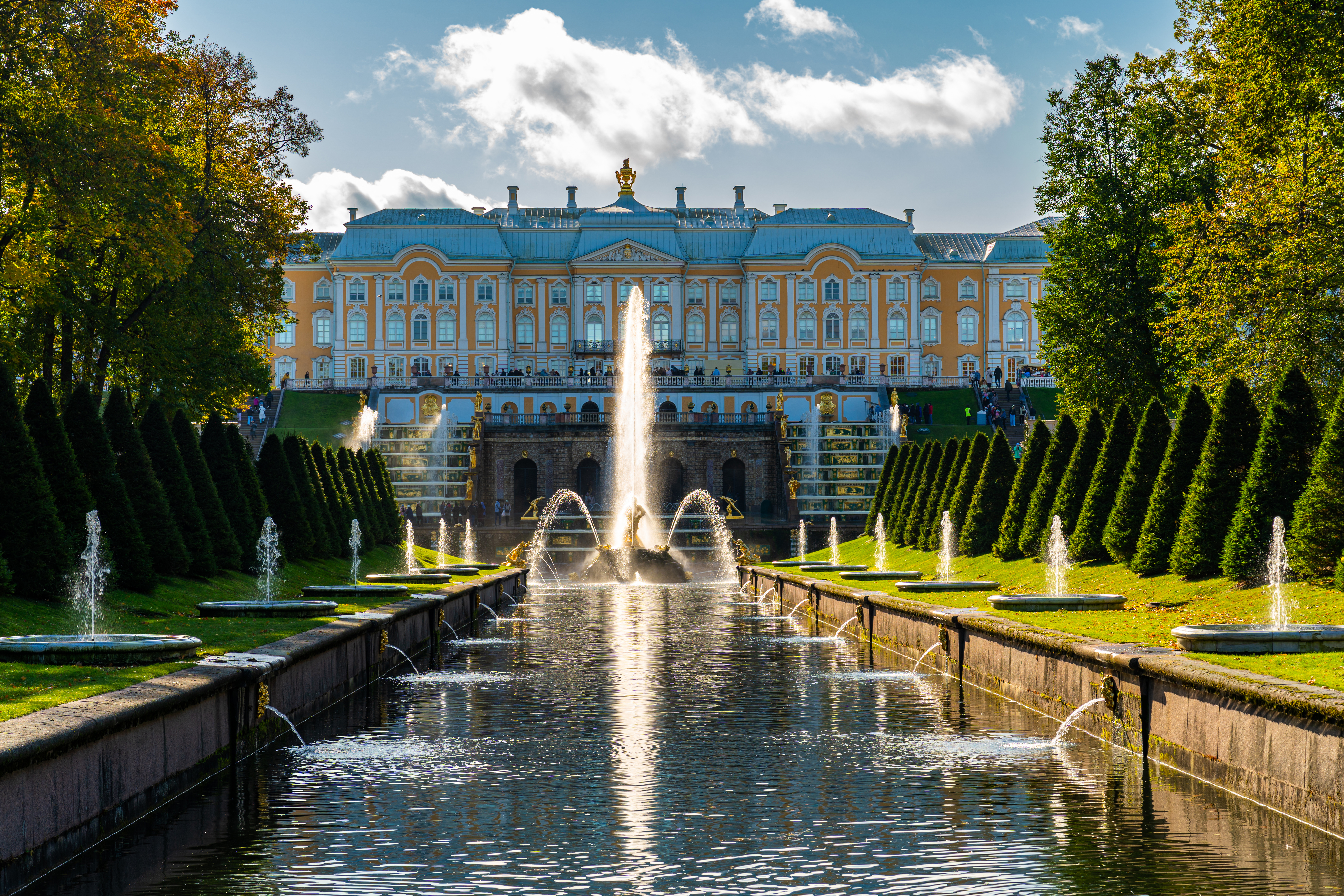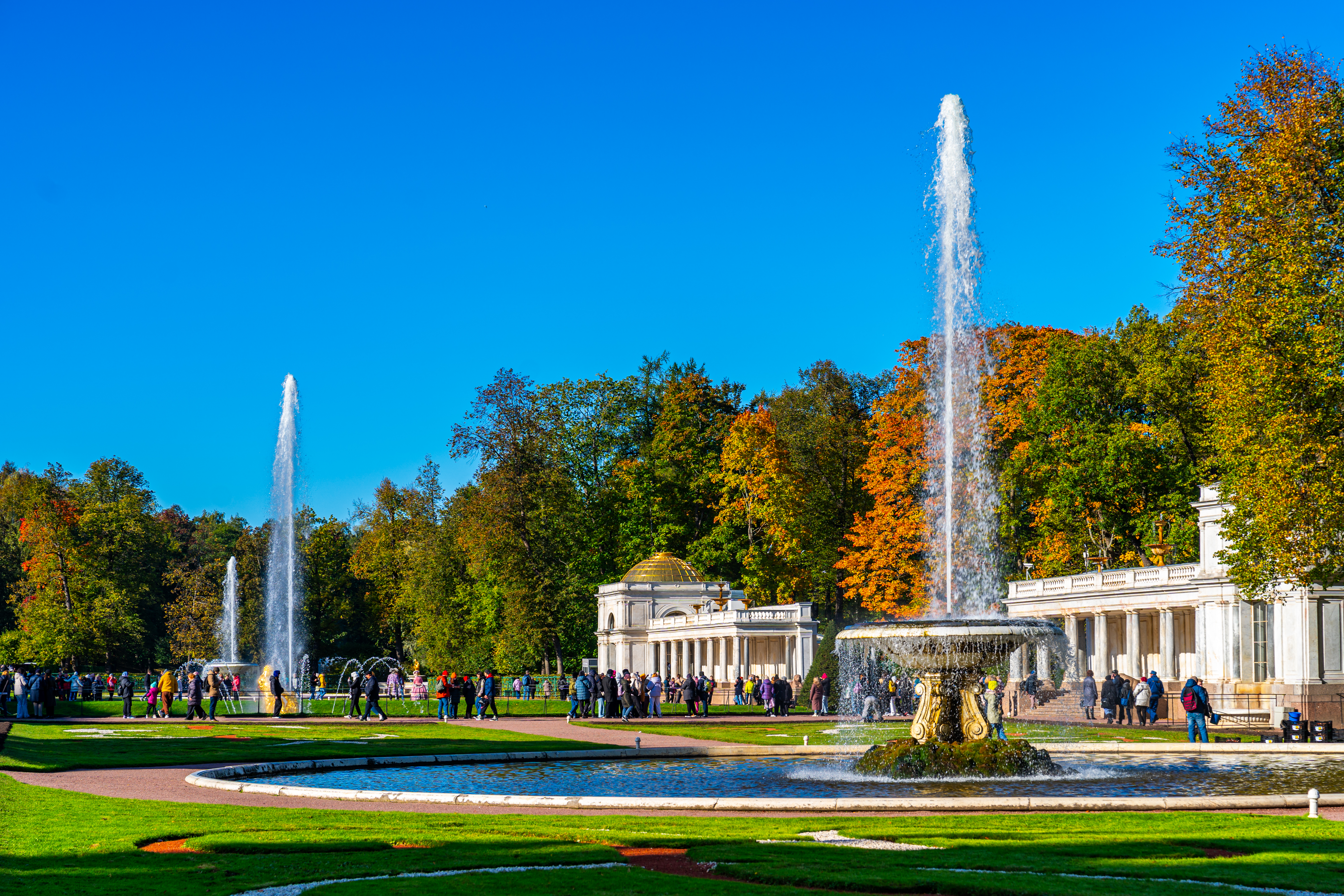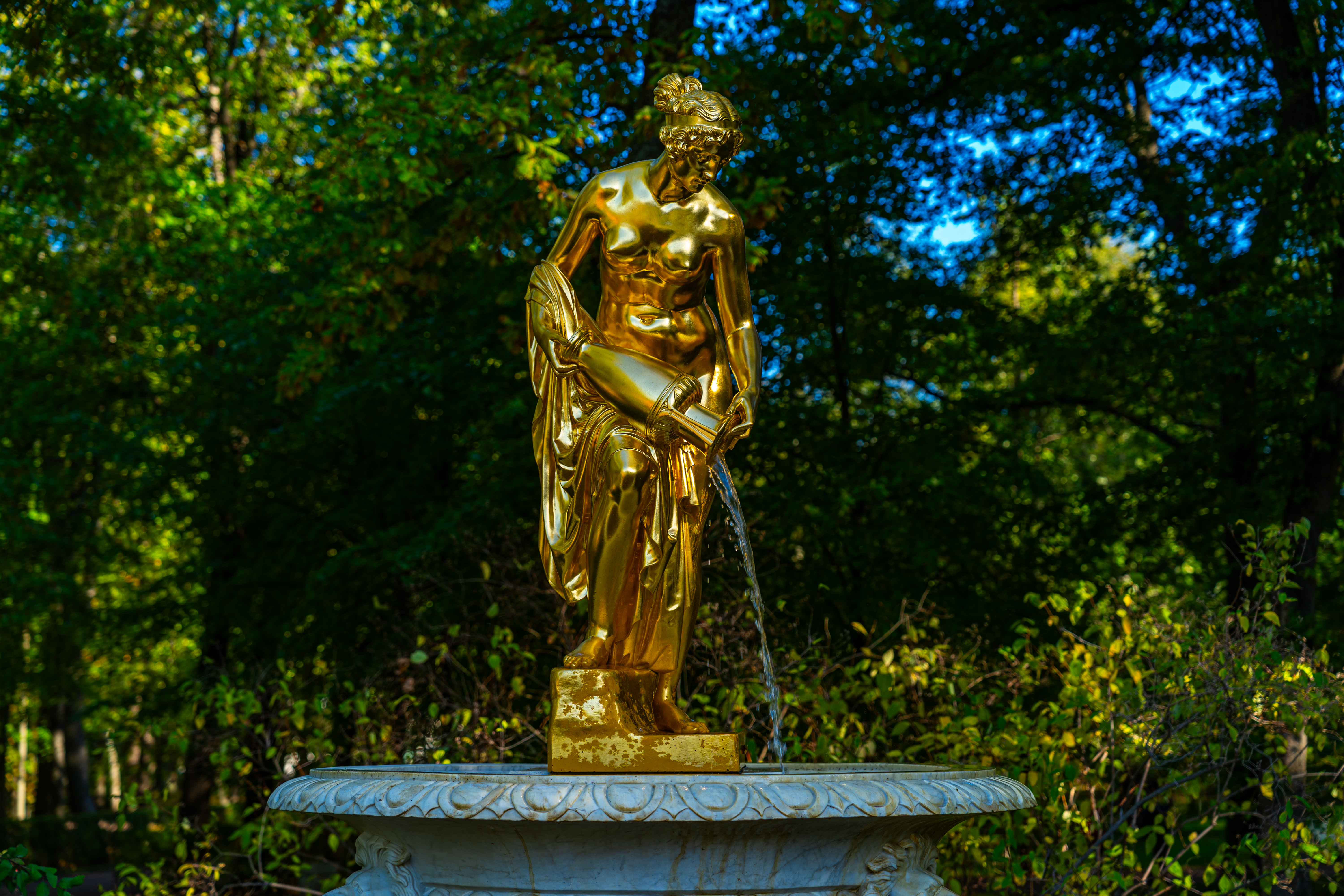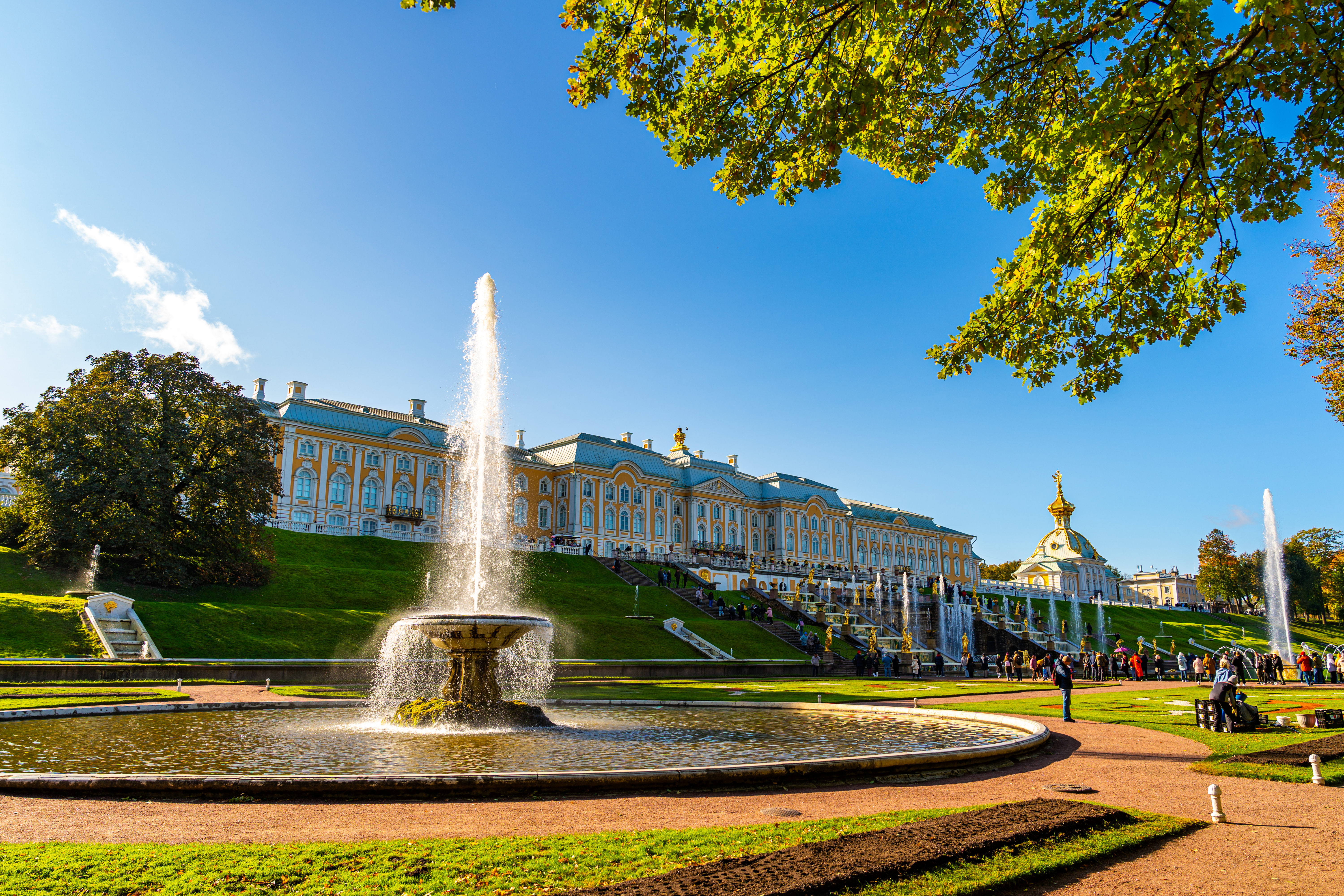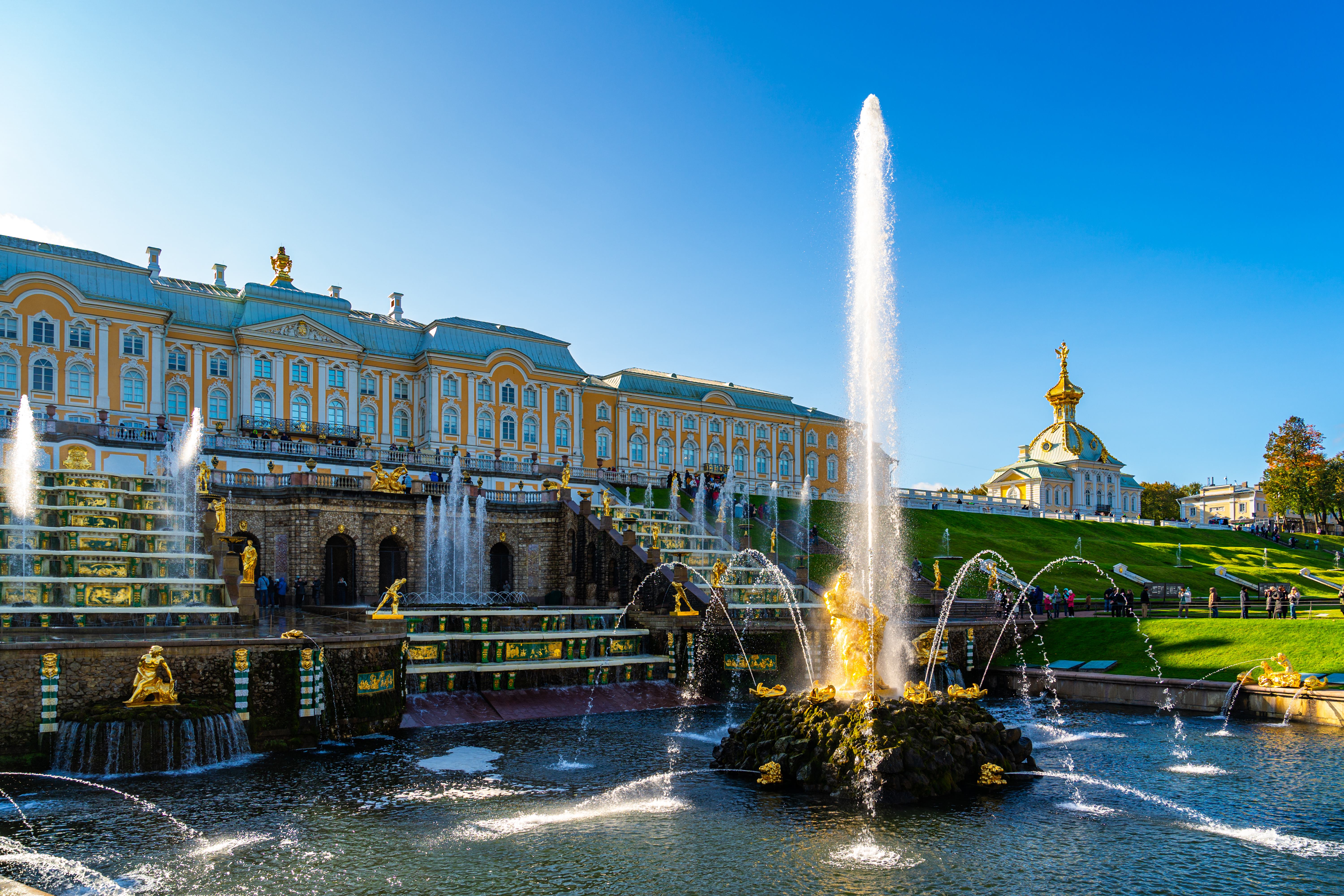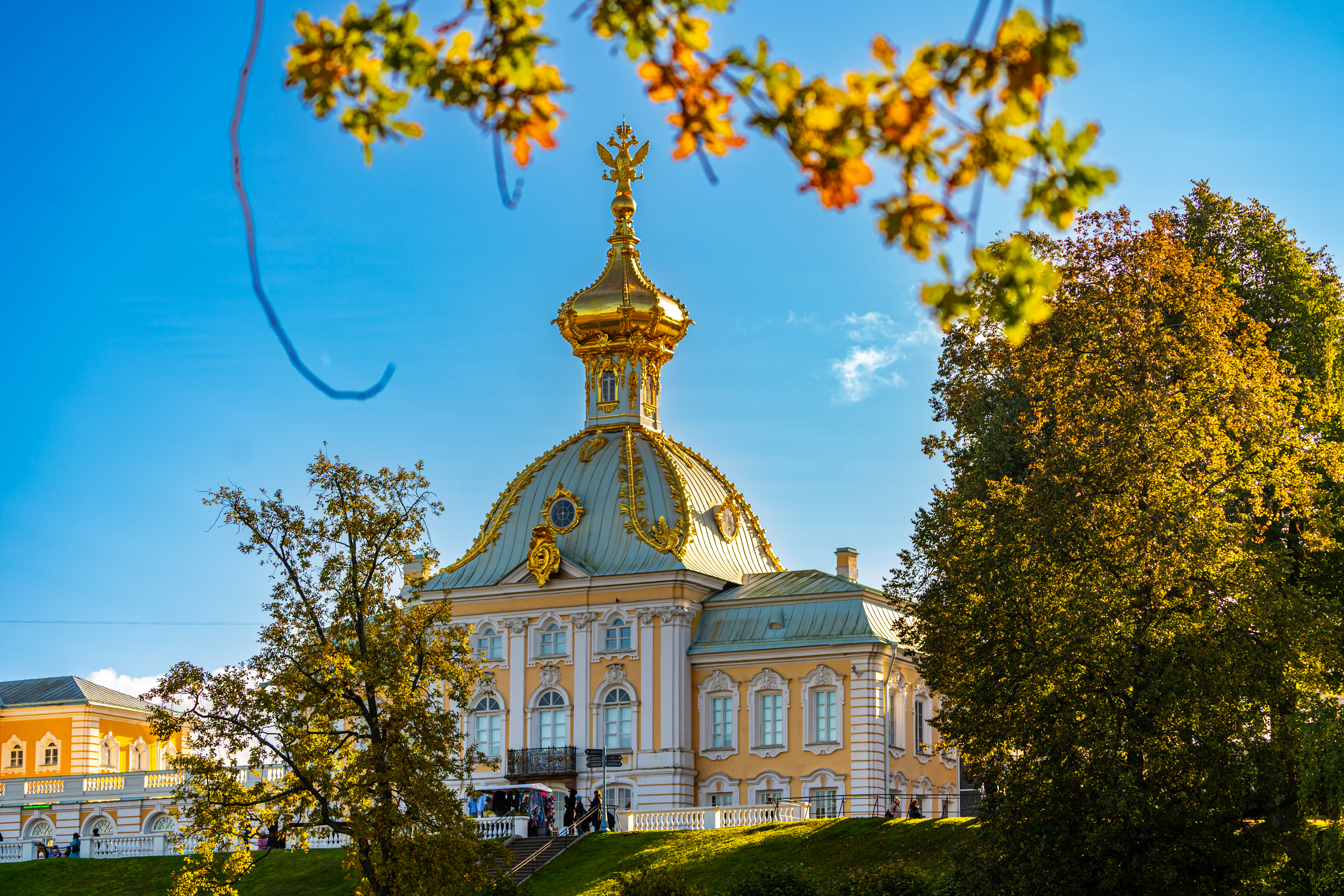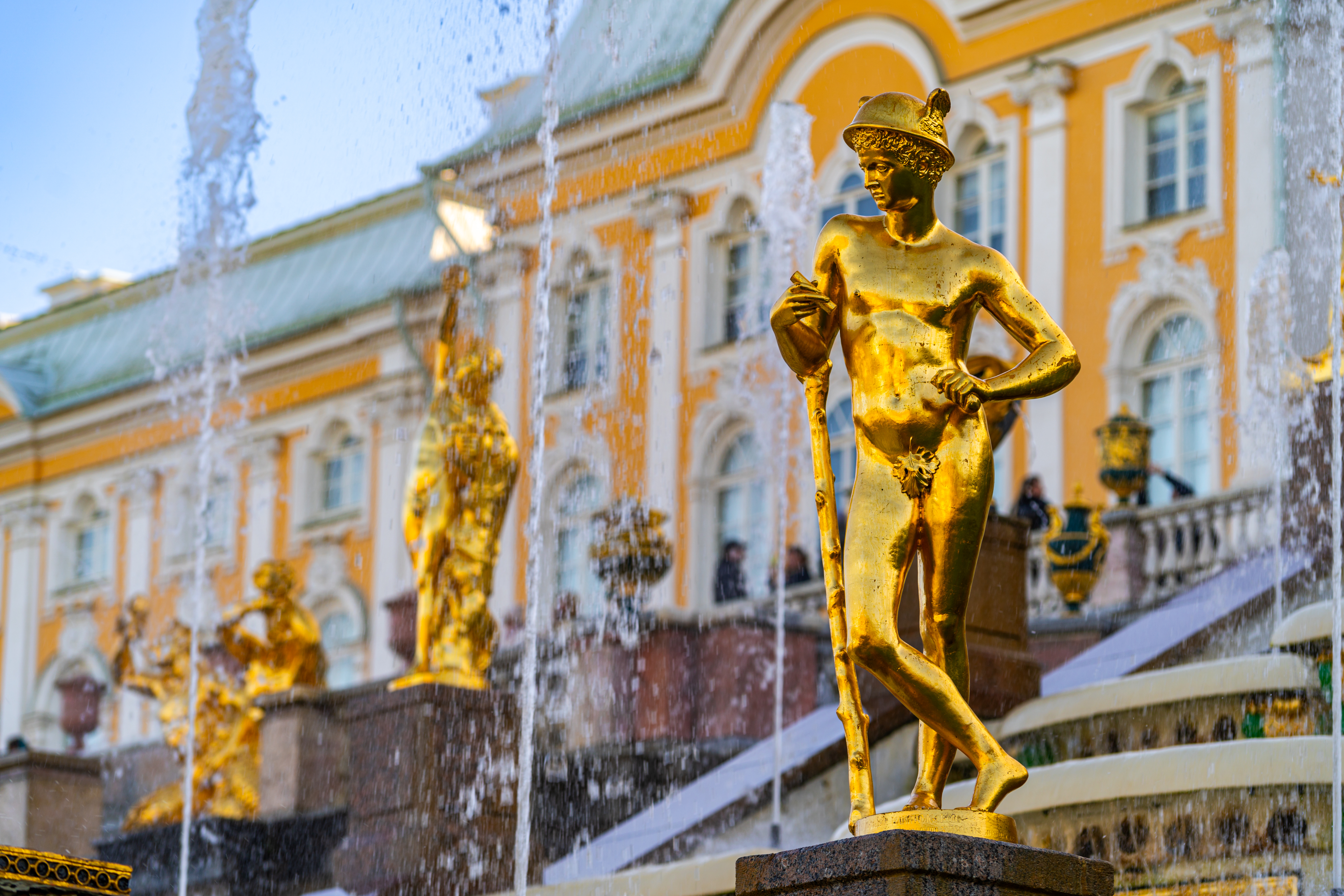 Back
Back
Grand Palace (Peterhof)

Peterhof, 2 Razvodnaya st.
The center of the Peterhof ensemble is the Grand Palace – the main summer residence of the Russian emperors
A magnificent three-story building with galleries and sparkling gilding of the domes of the Church and Coat-of-Arms pavilions stretches along the terrace for almost three hundred meters.
The general idea of the location and the original design of the Upper (Hilltop) Chambers belonged to Peter I.
During the 18th and 19th centuries, such outstanding Russian and Western European masters as Braunstein, Le Blond, Michetti, Zemtsov, Rastrelli and Stackenschneider worked on the creation of the palace’s architectural appearance and on its many chambers’ design. Not only in the past centuries, but also these days, guests of Peterhof do not cease to admire the magnificence of the Grand Palace’s interiors.
The Oak Cabinet of the first Russian emperor has been preserved in the Petrovsky wing of the palace. The main element of decoration of this small but cozy room is carved oak panels created during Peter’s own lifetime by the talented French sculptor Nicolas Pineau. There are also personal belongings of Peter I, including his travel clock made by the German master Johann Benner.
In the middle of the 18th century, during the reign of Peter I’s daughter Elizabeth, famous architect Francesco Bartolomeo Rastrelli, an unsurpassed master of the Baroque style, worked in Peterhof. The interiors created by the genius Rastrelli are characterized by an abundance of gilded wood carvings, parquet floors made of various types of fine wood, lots of mirrors and painted plafonds. The entire western wing of the palace is occupied by the Dance Hall or, as it was called in the 18th century, the Merchants’ Hall. As legend has it, Elizabeth Petrovna specifically demanded that Rastrelli decorate the hall as richly as possible: “to make it shine with gold...”. The reason was that this hall was intended for receiving eminent merchants, who, according to the Empress, loved gold.
In the latter half of the 18th century, new changes and alterations of the Grand Palace’s interiors took place in accordance with the then fashionable style of classicism. Architects Y.M. Felten and J.B. Vallin de la Mothe redesigned the interiors of the Chesme Hall, the Throne Hall and the Chinese cabinets in the 1760-1770s.
The result of two hundred years of construction was the palace, where the chambers of the Peter the Great era met baroque halls of the middle of the 18th century, and where solemn and austere rooms of the classicism period existed side by side with the quarters of the mid-19th century, which revived the basic artistic principles of rococo. The Great Peterhof Palace was the summer headquarters of the formal life of the Russian Empire: many important events, holidays and receptions, balls and masquerades took place here.
Nowadays, the Grand Palace is a unique historical and art museum, its collection comprised of about 3500 exhibits. Among them are pieces of furniture, paintings, fabrics, lighting fixtures and porcelain, all of which corresponded to the tastes of the crowned owners of the Palace.


